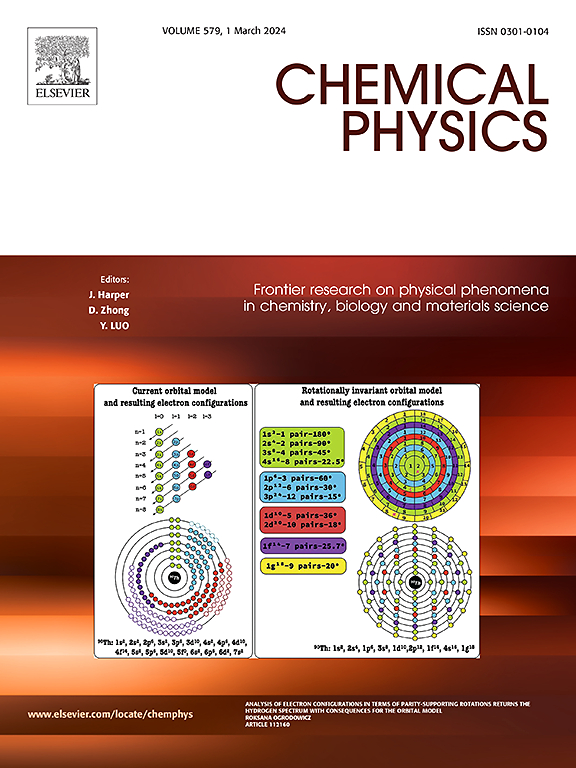垂直堆叠法定制 P-MAB 超薄二维 vdW 异质结构(M=钛、锆、铪;A=S,B=Se)的电子和光学特性
IF 2
3区 化学
Q4 CHEMISTRY, PHYSICAL
引用次数: 0
摘要
异质结构形式的垂直堆叠是提高相应孤立单层性能的有效方法。与单层结构相比,杰纳斯单层(MAB)和磷单层之间的强相互作用能显著改善物理和化学性质。利用第一原理(混合)计算,我们探索了 P-MAB(M = Ti、Zr、Hf;A = S、B=Se)范德华异质结构的电子结构和光学特性,以开发其在电子和光电设备中的潜在应用。Ab initio 分子动力学(AIMD)模拟证实了这些系统的热稳定性,而声子光谱则证实了这些系统的动态稳定性。我们的分析表明,所有构型都保持了间接带隙的半导体性质。通过计算部分状态密度 (PDOS),证明了 P-MAB 异质结构中的 II 型带排列。Bader 电荷分析和平面平均电荷密度差异表明电子从 P 单层转移到了 MAB 单层。此外,我们对介电函数ϵ2(ω)的研究表明,最低能量位移主要受到激子效应的影响。本文章由计算机程序翻译,如有差异,请以英文原文为准。
Vertical stacking approach for tailoring electronic and optical properties of ultrathin two-dimensional vdW heterostructures of P-MAB (M=Ti, Zr, Hf; A=S, B=Se)
The vertical stacking in the form of heterostructures, is an effective way to enhance the performance of corresponding isolated monolayers. Strong interactions between Janus monolayers (MAB) and Phosphorus (P) monolayers result in significant improvements in both physical and chemical properties compared to single layer configurations. Using first-principle (hybrid) calculations, we explore electronic structure and optical properties of P–MAB (M = Ti, Zr, Hf; A = S, B=Se) van der Waals heterostructures, for potential applications in electronic and optoelectronic devices. Ab initio molecular dynamic (AIMD) simulations confirm the thermal stability, while phonon spectra confirm the dynamical stabilities of these systems. Our analysis reveals that all configurations maintain semiconducting nature with an indirect bandgap. The type-II band alignment in the P–MAB heterostructures is demonstrated through calculations of the partial density of states (PDOS). Bader charge analysis and planar-averaged charge density differences indicate an electron transfer from the P monolayers to the MAB monolayer. Furthermore, our investigation of the dielectric function shows that the lowest energy shift are primarily influenced by excitonic effects.
求助全文
通过发布文献求助,成功后即可免费获取论文全文。
去求助
来源期刊

Chemical Physics
化学-物理:原子、分子和化学物理
CiteScore
4.60
自引率
4.30%
发文量
278
审稿时长
39 days
期刊介绍:
Chemical Physics publishes experimental and theoretical papers on all aspects of chemical physics. In this journal, experiments are related to theory, and in turn theoretical papers are related to present or future experiments. Subjects covered include: spectroscopy and molecular structure, interacting systems, relaxation phenomena, biological systems, materials, fundamental problems in molecular reactivity, molecular quantum theory and statistical mechanics. Computational chemistry studies of routine character are not appropriate for this journal.
 求助内容:
求助内容: 应助结果提醒方式:
应助结果提醒方式:


